The unexpected gadgets riddled with germs, revealed
It is often seen as one of the dirtiest places in the house.
But a new study has warned that the toilet pales in comparison to various gadgets you touch all day without thinking about it.
Research by CloudZero discovered that your headphones, laptop, computer mouse, keyboard and phone can harbor thousands of colonies of bacteria.
The dirtiest devices of all are headphones, where an average of 1,073 bacterial colonies thrive in the warm, moist environment around your ears.
Some laptops now contain twice as much bacteria as a public waste bin and harbor more mold than any other piece of technology.
Experts say forgetting to clean these common appliances can expose you to potentially harmful pathogens.
Dr. Maria Knobel, medical director of Medical Cert UK, said: ‘Technical devices, such as smartphones, are often touched and placed on different surfaces – desks, counters, public transport and bathrooms – collecting germs that are easily transferred to our hands and faces . ‘
Researchers say the average pair of headphones harbors four times more bacteria than a toilet seat, while some particularly dirty headphones harbor seven times more germs (stock image)
Our personal devices are the things we handle most often throughout the day and are often magnets for dirt and grime.
To see how dirty our technology really is, researchers swabbed 38 appliances, garbage cans, bus handles and toilet seats to find out the context.
The samples were then sent to the laboratory and grown on petri dishes.
By counting the number of different bacterial colonies that emerged, scientists were able to estimate how many different bacterial strains lived on the original device.
The dirtiest of all devices arrived: headphones with an average of 1,073 bacterial colonies.
For comparison, that makes the average headset twice as dirty as a toilet seat, which had 425 colonies, and only slightly cleaner than the average public waste bin of 1,100.
However, some headphones tested produced more than 3,000 bacterial colonies – seven times more than the toilet.
This is probably because the sweat and heat from our heads create the perfect breeding ground for bacteria to thrive and grow.
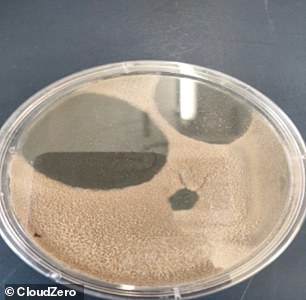
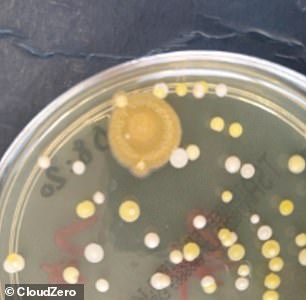
Common devices were found to harbor as many as 3,000 bacterial colonies. On the right you can see a fungal colony that grew on a laptop, while on the left you can see the different types of bacteria sampled with a phone
In second place were laptops with an average of 645 bacterial colonies.
That means the laptop you use to work, watch TV or play games could be more than three times as dirty as the handles of the bus that produced just 190 colonies.
Laptops were closely followed by computer mice, which came in third with 408 colonies and keyboards in fourth with 237.
The researchers found that phones are the cleanest of all our personal devices, harboring an average of only 187 bacterial colonies.
However, there’s no guarantee that your own device will be clean, as the dirtiest phones tested in the study were covered in 1,130 different colonies of bacteria.
What makes this particularly worrying is that phones are the devices we come into closest contact with, increasing the risk of transmitting dangerous bacteria.
Dr. Knobel says, “For example, using a phone while eating, placing it on the gym floor, and later holding it to your face leads to a buildup of bacteria, dirt, and oils.”
However, it’s not just the number of bugs on your devices that are a problem, but also their specific variants.
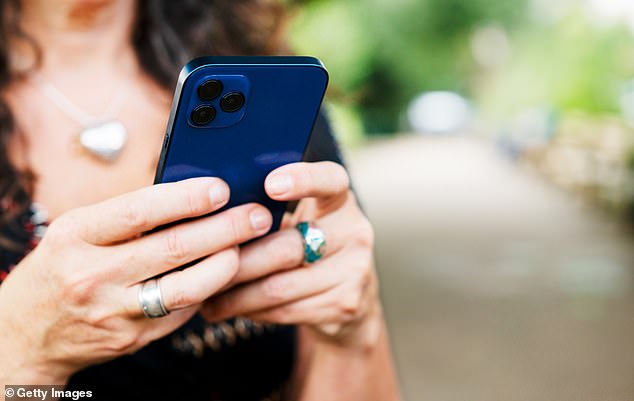
Cell phones were home to Staphylococcus and Micrococcus bacteria that can cause infections or pose risks to people with weakened immune systems (file photo)
For example, the bacteria Staphylococcus and Micrococcus were found on almost all devices.
These common bacteria are usually found on our skin or in the environment and are likely transferred from people to devices.
Neither are particularly dangerous to a healthy individual, but staphylococci can cause infections, and Micrococcus can pose risks to people with weakened immune systems.
More worrying was the presence of Pseudomonas bacteria growing on some headphones and computer mice.
This bacteria is commonly found in cockroach feces and can lead to eye infections, rashes, pus-filled pimples, diarrhea, headaches, and other conditions.
For people with weakened immune systems, Pseudomonas can even lead to pneumonia, urinary tract infections and sepsis.
To make matters worse, the bacterium is also known for its high antibacterial resistance, making infections extremely difficult to treat.
In hospitals, this cockroach-borne bacteria is known to be a major cause of infections in ill-health patients.
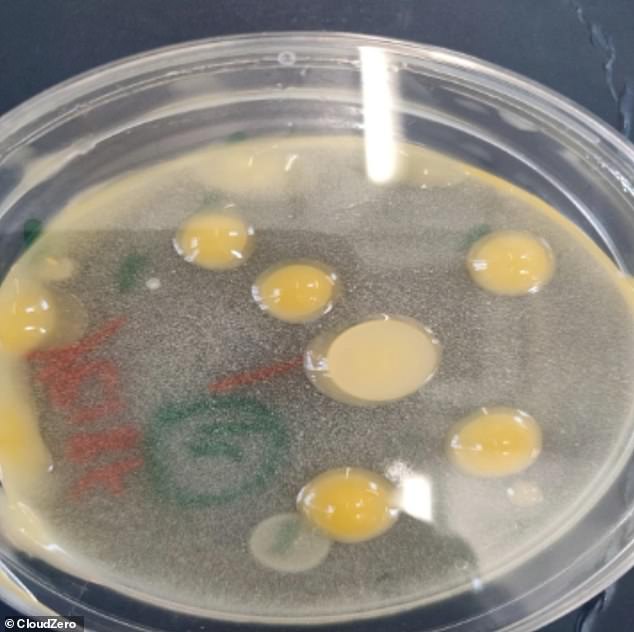
Samples from headphones were found to contain Pseudomonas bacteria, which is commonly found in cockroach feces and can lead to sepsis
In addition, keyboards, phones and laptop trackpads were found to be particularly susceptible to mold formation.
This is a type of fungus that grows in moist environments with abundant food sources and reproduces by releasing spores into the air.
For people with asthma or a weakened immune system, the presence of mold can lead to breathing problems, allergic reactions and irritation.
Dr. Knobel says that’s why it’s important that people take steps to keep their devices clean.
She advises: ‘Devices should be cleaned daily to minimize the risk of infections such as colds, flu or acne, especially for people with active lifestyles who regularly expose their phones to different environments.
‘During cold and flu seasons, technical devices can harbor viruses for up to 24 hours, increasing the risk of transmission.’
To thoroughly clean your device, use an electronically safe cleaning solution or disinfectant and a soft microfiber cloth.
For keyboards, first turn the device upside down and gently shake it to remove dirt, which can be the perfect breeding ground for mold and bacteria.
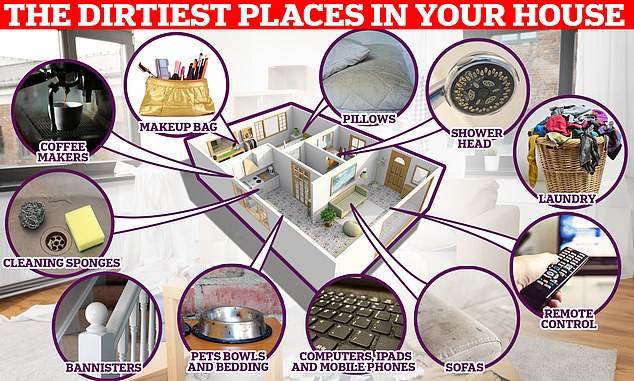
Previous research has found that technology like computers and TV remotes are just as dirty as places like the shower head and pet bowls
Also, when cleaning your phone, make sure to remove the case first and wipe away any visible dirt.
The official advice from the FCC is to use a cloth lightly dampened with soapy water, but be careful not to get liquids into your devices.
To avoid the risk of damage, unplug and turn off your electronics before cleaning them. Avoid harsh chemicals such as bleach or abrasives.
After cleaning, allow the device to dry sufficiently before switching it on again.
